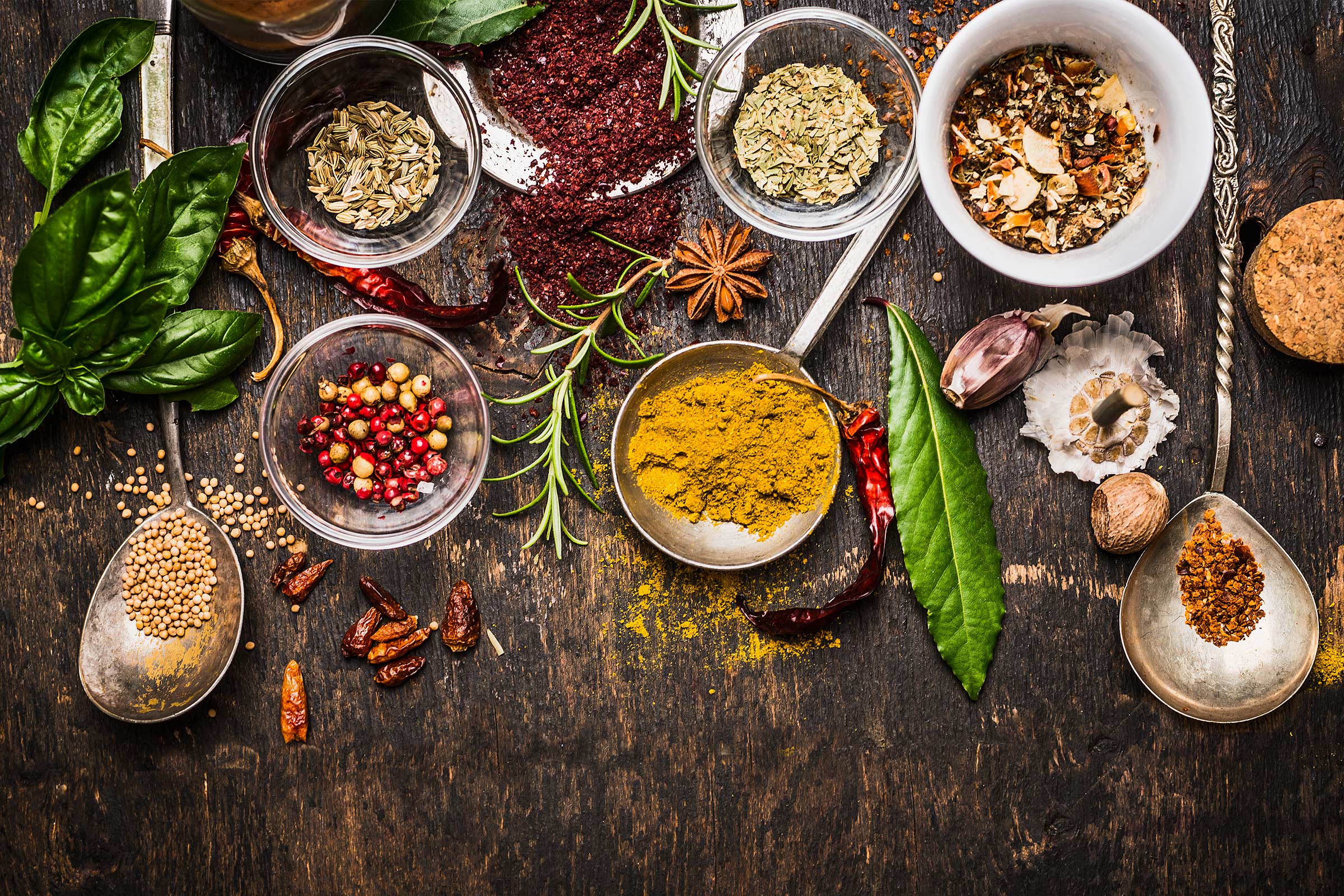Dried herbs are an easy and convenient way to add flavor to all of your favorite dishes! In addition, having them on hand allows you to explore all types of cooking on the fly!
Storing and using your Dried Herbs
- Always store herbs in a cool, dry place away from heat or direct sunlight to get the best shelf life from your herbs.
- If you use jars, be sure they are air-tight!
- Most herbs can be used for up to one year when stored properly before losing flavor and potency.
- To convert from fresh to dried herbs in any recipe, use 1 tsp of dried for every Tbsp of fresh.
- Adding your herbs to your oil before adding it to your food is an excellent way to re-hydrate your herbs before using them.
- Since dried herbs have the best flavor when re-hydrated, add them when you start cooking or at least 15-20 minutes before you finish. They are best when added to a recipe during the cooking process rather than sprinkling them on top.
The Herbs
Dill
 Dried dill is helpful where fresh isn’t available, to give a Scandinavian touch to fish, egg dishes, and potatoes (don’t confuse with dill seeds, which are used in pickles).
Dried dill is helpful where fresh isn’t available, to give a Scandinavian touch to fish, egg dishes, and potatoes (don’t confuse with dill seeds, which are used in pickles).
Oregano
 Oregano is the one herb that is generally considered better dried than fresh. It’s indispensable in Italian and Mexican cooking, especially with tomatoes and cheese. Its cousin marjoram is often overlooked but offers a sweeter, less assertive flavor, useful for red meats! It has a bold overpowering flavor, so it’s best paired with robustly flavored dishes.
Oregano is the one herb that is generally considered better dried than fresh. It’s indispensable in Italian and Mexican cooking, especially with tomatoes and cheese. Its cousin marjoram is often overlooked but offers a sweeter, less assertive flavor, useful for red meats! It has a bold overpowering flavor, so it’s best paired with robustly flavored dishes.
Bay Leaves
 A couple of bay leaves will give mellow sweetness to braises, stews, stocks, and soups. A bay leaf also makes a pleasing change when flavoring custards and rice puddings – infuse in heated milk or stir in the rice.
A couple of bay leaves will give mellow sweetness to braises, stews, stocks, and soups. A bay leaf also makes a pleasing change when flavoring custards and rice puddings – infuse in heated milk or stir in the rice.

Dried thyme is a multi-purpose herb to pop into a soup or casserole when a sprig of fresh is not available. Also great with chicken and a staple of Black Bean Soup!

This is a versatile spice that you can use in both sweet and savory dishes. Some initial studies claim it helps reduce blood glucose and bad cholesterol, but more research is needed. What isn’t needed is an excuse to add cinnamon to your breakfast oats, hot milk, cakes, and pies, or meat marinades.

Rubbed Sage is better than powdered. It lacks fresh zing, but it complements poultry, pork and butternut squash, and stuffings.

Rosemary adds a pine fragrance to slow-cooked dishes (particularly Italian-style soups, stews, braises, and lamb dishes). Use sparingly, and chop if you don’t want spiky leaves in your finished dish.

This is salt’s twin brother and always adds a kick to a dish. It is probably the most popular spice in the world. Best to buy the whole peppercorns and a grinder, but buying ground is fine too. For a sharper bite, try white pepper.

The ginger root is a cornerstone of Asian cooking, imparting a slightly sweet, slightly hot flavor. It goes well will garlic in many Thai, Indian, and Chinese dishes. Ginger may help stop nausea and may also relieve heartburn and bloating. Try a ginger and honey tea when you’re under the weather.

There’s nothing like basil in a tomato sauce or tomato salad. It’s easy to grow basil as a potted plant on a windowsill. Keeping a supply of dried basil at home ensures you always have this fantastic spice on hand!



